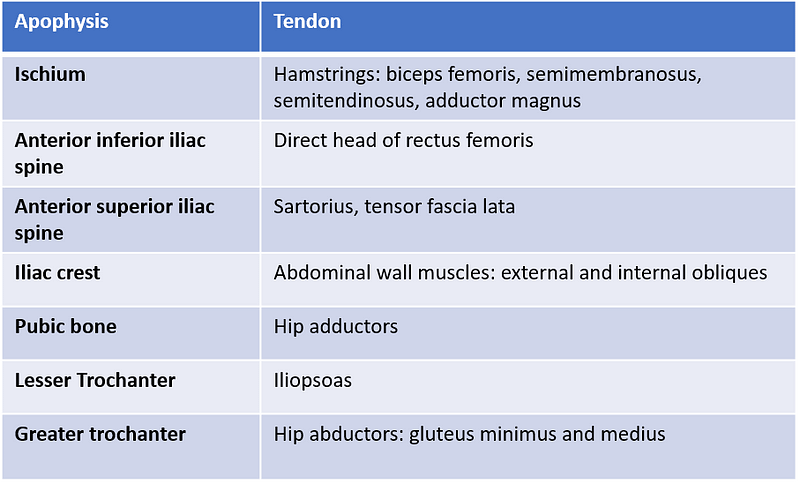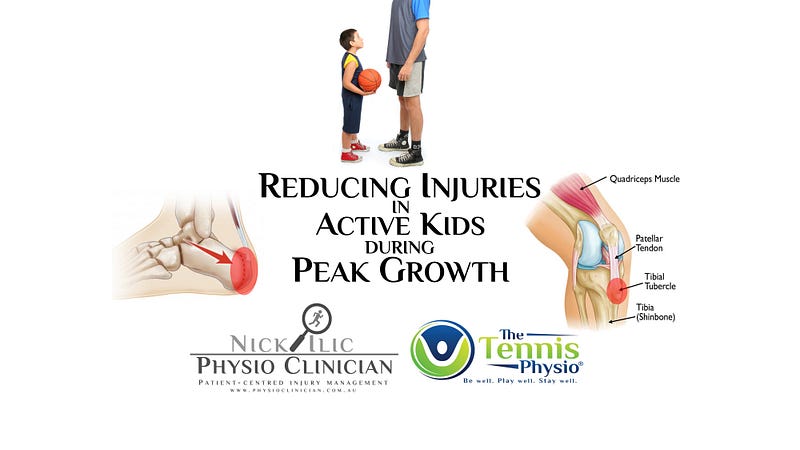Parents Playbook | Avoiding injury during Peak Growth in Active Kids
Keeping active kids injury-free, who are in early adolescence (10–14yo), is a challenge.
This is a no-paywall blog post with insights I believe are valuable. If you find it useful, subscribe to my Substack for more in-depth content, exclusive case studies, and clinical insights.
Your support helps me continue sharing everything I’ve learned in the clinic with the world
☕ Prefer a one-off thank you? Buy Me a Coffee.
This post is a guide only and should not be taken as medical advice. It does not replace assessment and recommendations from a registered and regulated healthcare professional.
Keeping active kids injury-free, who are in early adolescence (10–14yo), is a challenge.
On one hand, this is a time when parents/guardians really want to keep their kids active as adolescence is a time when “the bank is open for deposits”, the body builds up its stores of bone, tendon and cartilage. Once we get to our early-mid 20s, no more deposits, “withdrawals only”. There is a slow loss of bone density and tendon and cartilage density.
Early adolescence is also a time for skill-building, having a high volume of participation in sports and physical activities in order to grow a very large library of movement and sport-specific skills. In coaching circles we call this the “time for ABCs”: Agility, Balance and Coordination.
On the other hand, this is also a high-risk time for a certain type of injury, the “growing pains”, as this is when kids go through Peak Height Velocity (PHV), the time when their bones are growing super fast. In girls, this usually occurs between 11–13 years of age, in boys usually around 12–14 years of age (+/- 1.5years in my experience).
When the bone increases its length the muscle/tendon length lags behind it, this biomechanical tug-o-war can cause an injury where the tendon attaches into the growth plate of bones (the Apophysis), leading to Traction Apophysitis. Common places for Traction Apophysitis are:
- Knee — Patella Tendon Apophysitis aka Osgood Schlatter’s Disease
- Heel –Achilles Tendon Apophysitis aka Severs Disease

The above are the ‘classic’ Traction Apophysis injuries, however with an increase in participation in competitive sport during early adolescence since the 1990s, including sports specialisation, there has been an increased prevalence of proximal (closer to the trunk) traction-overload injuries, especially around the hip/groin. These are particularly prevalent in “flexibility-heavy” sports such as gymnastics where kids are stretching heavily, regularly.

All of these injuries are from excessive pulling/traction load by a tendon on the growth plate at the ends of bones. During peak growth, there is already a high ‘internal’ load where the tendons attach onto bones, as bones grow fast and muscles/tendons take longer to lengthen and adjust their tone to the new bone length. Then if you add the external load (kids playing repetitive jumping/running/stretching sports and activities) then it’s like skating on thin ice,…. with hot skates.
The risk of developing Traction Apophysitis appears to be much less in kids going through a growth spurt when there is a variety of exercise/sports/activities that they do.
If two kids (twins, for example purposes) both do 12 hours of sports, one does 12 hours of basketball, the other does 6 hours of basketball and 6 hours of tennis, the one who does the same sport will be more likely to develop Osgood Schlatters (aka Jumpers Knee, Traction Apophysitis of the knee).
One of the biggest issues with this type of injury is:
- The most commonly recommended exercise (by well-meaning people who aren’t Physios.. and also some Physios who unfortunately aren’t up to date with their Compulsory Professional Development/ongoing learning) is Stretches.
If your child has an injury that is from excessive and repetitive pulling of the tendon where it attaches to the bone…. The last thing you want to do is stretching…., which is excessive and repetitive pulling of the tendon where it attaches to the bone.
If your child has Traction Apophysitis, here my list of things to cover during an appointment:
Address what activity is causing the injury and have complete rest from it (for at least two weeks). Make sure they aren’t stretching. Rule out nasty things like Stress Fractures.
Educate the parent/carer/coach on what is happening for future flareups in the same child or younger siblings.
Offload the involved tendon if possible, for example, for Severs (heel pain) it is quite common to put a little heel raise in their shoes.
Following reassessment after a short time (min 2 weeks), a gradual return to whatever activity/sport/exercise they were doing in the first place.
As always, if your child has a Sports or Exercise related injury, book them in to see a Sports and Exercise Specialist (Physiotherapist or Physician).
If your sporting child is going well, but you have concerns, the best thing to do is to get them in a for a Sport-Specific Injury Screening.
To finish the post, it’s probably best to quote a position statement on Early Sport Specialisation by the Australian College of Sports and Exercise Physicians ….simple guidelines in order to minimise the risk of issues relating to early specialisation, sport specialisation and training volume. These include:
i. Limiting total sport participation (training and competition) to no more than 16 hours per week, irrespective of the total number of sports played.
ii. Ensuring that the ratio of hours spent in organised sport (training and competition) those spent in ‘free play’ does not exceed 2:1.
iii. Limiting hours spent in organised sport (training and competition) per week such that they do not exceed the athlete’s age. E.g. a 10 year old should not train more than 10 hours per week across all sports.
iv. Adhering to the evidenced-based load guidelines for a specific sport (e.g.
Did this help you understand your pain better or make a more informed decision? If so, even a small contribution helps me keep content like this going.
This is high-value information that normally costs hundreds of dollars in a clinic—but here, it’s free for everyone.
☕ Buy Me a Coffee to say thanks, or become a paid subscriber—you’ll get access to more expert insights and can ask me questions about your pain anytime!













